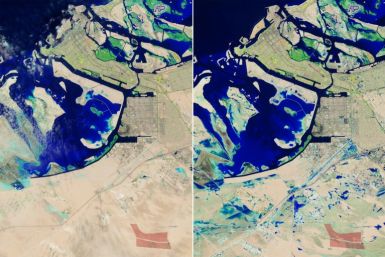Severe Water Scarcity Threatening Brazil's Saulo Paulo: City To Run Out Of Water In Next 60 Days

Brazilian city Saulo Paulo, which is world's 12th largest city and home to 20 million people, is facing the dire threat of going out of water in another 60 days. The anguished city's water scarcity has become a stark reminder of the threat faced by human societies as a fall out of reckless water use, and the calamituous effects on human life.
Left with only less than 60 days of water supply, Saulo Polo is now dipping into the second of three emergency reserves. Other technical reserves of the city's water sources have already been exhausted even as the city is entering a heavy water use holiday season. Now the 20 million residents are going to enter severe water rationing and devastating disruptions.
Saulo Paulo Lesson
When Sao Paulo plunges into the reality of a waterless life, it will be in the footsteps of Easter Island, the Anasazi Indians, ancient Assyrians and other failed civilizations that collapsed and died out long ago, said a Natural News report. Many scientists see this as the beginning of the "era of collapse" in human civilization. This is the beginning of the process and it may take a century to see it unravel in full throttle.
For future historians, this era can be recorded as a time of unbridled destruction of the planet by over-extended human societies grounded in self-delusion and greed. Only some miraculous rain can now reverse the spectre of severe drought in the Brazilian city. Else, Sao Paulo will be on a literal "dry run" in as little as 60 days. This kind of a slide into perpetual drought has never been witnessed in the history of human civilization, where a huge mass of 20 million people suddenly going out of water. Right now, no one knows how such a scenario might play out.
More dry scenarios are set to unfurl in many regions across the world. They will include California, India, Oklahoma, Brazil and China. Everywhere the cause is human populations having out-grown the capacity of their local water systems.In Las Vegas, the fascinating city of the U.S. has a bleak water future. This is despite the continued mushrooming of new casinos and influx of more population. The water level of Lake Mead is dipping to emergency levels and it continues to plummet.
In California and many other parts of the world, farmers are pumping out that ground water, which should have been there for another 15 years. As they exhaust the aquifers and make it dry, water use will tend to become ever more precarious. Further, they start using water that should have lasted until 2050 or beyond. That means the aquifers meant to last 100 - 200 years will go dry in the not-too-distant future. The result will be that farms, which once produced food, will turn out a new dust bowl.
China's shortage
Meanwhile, China is battling with severe water crisis. About 60 percent of China's groundwater has become polluted. Water scarcity is becoming a big problem for China. Scarcity is tied up with issues of energy use, urbanization and modernisation, reported Diplomat.






